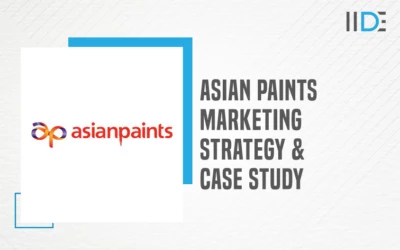Previously, we had covered the in-depth SWOT Analysis of U.S. Bank – the fifth-largest commercial bank by assets in the United States. Let us now do an absolute SWOT analysis of Santander.
Banco Santander is a Spanish multinational financial services company based in Madrid and Santander. Santander is the 13th largest banking institution in the world and one of the largest banks in Spain and the fourth largest in Europe.
The reason why this bank grew so big and the strategy behind the growth is it’s implementing some of the most successful marketing techniques using digital platforms as most of the customers are online nowadays. So if you are interested in learning the latest skills in digital marketing – check out our Free MasterClass on Digital Marketing 101 by the CEO and Founder of IIDE, Karan Shah.
Before we go into the SWOT Analysis of Santander, let us know about Santander as a company.
About Santander

Banco Santander does business as Santander group and is a Spanish multinational financial services company that offers all banking and financial services. It is known for its European Banking operations but also has operations in Northern and Southern America and recently in Asia mainly through its mergers. It was founded in 1857 as Banco de Santander and later in 1999 merged with Banco Central Hispano. It is placed in 37th position in Forbes Global 2000 list of the world’s biggest public companies.
| Founder | Banco De Santander |
|---|---|
| Year Founded | 1857 |
| Origin | Santander & Madrid, Spain |
| No. of Employees | 186,000 |
| Company Type | Public |
| Market Cap | $ 66.64 Billion (2021) |
| Annual Revenue | $ 44.297 Billion (2020) |
| Net Income/ Profit | $ 7.708 Billion (2020) |

(Online Banking, Source: Santander Bank)
Products & Services of Santander
Banco Santander provides different banking & financial services such as:
- Retail banking
- Mortgages
- Corporate banking
- Cash management
- Credit cards
- Insurance
Competitors of Santander
Banco Santander is a leading financial services company and competes with:-
- Barclays
- UBS
- Bank of China
- Banco Bilbao Vizcaya Argentaria
- Td Bank
- Bank of America
Now that we know about the company overall, we can move on to discussing a detailed SWOT Analysis of Santander.
SWOT Analysis of Santander
SWOT Analysis informs about a company’s strengths, weaknesses, opportunities and threats. It will help us to compare Santander’s business and performance with its competitors and the industry in general. It is excellent in determining where the company excels and falls short, developing countermeasures and determining how the company can grow.
To better understand the SWOT analysis of Santander, refer to the infographics below:

Below is a step-by-step detailed guide to help you with the SWOT analysis of Santander.
Strengths of Santander
Certain abilities of an organization that are advantageous in capturing market share, attracting more customers, and maximising profits can be called the strengths of that organization.
- Strong Strategic Alliances with Other Leading Organizations: Santander operates across Europe, North and South America and Asia partly due to its acquisitions. It has also invested in many joint ventures in different places and rebranded many subsidiaries under the Santander name.
- Brand Reputation: Santander has been in the business of banking for a large number of years. Also, with the variety of products and services it provides, it is established as a leader in the industry. This helps the corporation to gain a reputation and get recognized easily.
Unique Tip: The time is digital and you can build your reputation online by learning the ways from an online reputation management course which is taught by digital marketing industry experts.
- Market Leaders: Santander is a market leader in Europe and present in Latin America, Singapore, Hong Kong, Africa and the USA. As of 2017 it is the 4th largest Bank in Europe and is the component of the Euro Stoxx 50 stock market index.
- Social Media Presence: With changing dynamics of business, Santander has been able to create a strong presence on social media having more than millions of followers on social platforms. Want to know how social media works as a strength for Santander? Then you must check out the benefits of social media marketing to get the answer to your query.
- Robust Operating Performance: Santander has a labour force of over 175,000 employees. Retail Banking, the main aspect of its operations, helps it make 74% of its operations.
- Sponsor of Many Sporting Events: Santander sponsored F1 for eleven consecutive seasons but currently focuses on football due to profitability and globalization> It has sponsored the UEFA champions league and Spanish professional football through La Liga.
Weaknesses of Santander
Certain aspects of an organization that may prove to be detrimental to the organization, its growth and results are considered a weakness of the organization.
- Limited Success Across the Core Business: Although Santander is one of the leading organizations in its industry it faces challenges in moving to other product segments with its present culture.
- Cash Flow Problems: There is a lack of proper financial planning at Santander regarding cash flows, leading to certain circumstances where there isn’t enough cash flow as required leading to unnecessary unplanned borrowing.
- Need to Invest More in New Technologies: According to the country’s scale of expansion and the geographical areas Santander needs to invest more money in technology to integrate the processes across the board. Currently, the investment in technology is not on par as per the vision of the company.
Opportunities of Santander
Companies have potential areas of focus for them to improve results, increase sales and ultimately profit they are the opportunities
- New Customers From Online Channels: Throughout the past few years the company has invested a lot into the online platform and this has led to the opening of a new sales channel for Santander. This can help the company in the coming years to leverage this opportunity by knowing its customer better and serving their needs using big data analytics.
- Increasing Income: There has been an increase in average household income along with an increase in consumer spending following the recession. This will result in growth in Santander’s target market with new customers that can be attracted towards the business.
- Population: The population has been growing and is expected to grow at a positive rate for the upcoming years. This is beneficial for Santander as there will be an increase in the number of potential customers that it can target.
- Interest Rate: Lower interest rates than compared to previous years provides an opportunity for Santander to undergo expansion projects that are financed with loans at a cheaper interest rate.
- Low Inflation Rate: The low inflation rate can bring more stability in the market and enable credit at a lower interest rate to the customers of Santander.
Threats of Santander
Some environmental factors that can be detrimental to the company’s growth are called threats.
- Competitor Technical Advancements: New technological advancements by a few competitors within the sector constitute a threat to Santander since customers who are drawn to this new technology may switch to competitors, reducing Santander’s overall market share.
- Currency Rate: The exchange rate fluctuates, which has an impact on a company like Santander, which has international sales but local suppliers.
- Increased Marketing Efforts: Due to the rise of digital marketing, there is an increasing number of promotional messages which are being sent by competitors. It clutters up the space, which leads to losing out on customers. You must also be well versed with a variety of digital marketing skills to get ahead of the competition.
- Political Instability: There are always changing regulations in different nations. It exposes changes in trade regulations and requires compliance by the companies.
- Competitor’s Promotional Messages: Competition’s increased marketing has posed a danger to Santander. Customers are assaulted with many messages on most platforms, and there is more clutter than ever. Santander’s promotional communications will be less effective as a result of this.
This ends our complete SWOT analysis of Santander. Let us conclude our learning below.
To Conclude
As we saw during the entire analysis, Santander is a global name that doesn’t rely on one strength, weakness, or opportunity, threat. But, it gets affected by so many different situations. Santander has always been a competitive player in the market and will continue to be.
Also, one point not to miss out on is that Santander is in line with its marketing effort. It has created a customer base for itself by tapping into the digital era and creating a social media presence on several platforms. If you are interested in learning digital marketing, don’t forget to check out IIDE’s 3 Month Advanced Digital Marketing Course.
We hope this blog on the SWOT Analysis of Santander has given you a good insight into the company’s strengths, weaknesses, opportunities and threats. You can also read our comprehensive study on the SWOT Analysis of JP Morgan Chase.
If you enjoy in-depth company research just like the SWOT analysis of Santander, check out our IIDE Knowledge portal for more fascinating case studies.
Thank you for taking the time to read this, and do share your thoughts on this case study of the SWOT analysis of Santander in the comments section below.







0 Comments